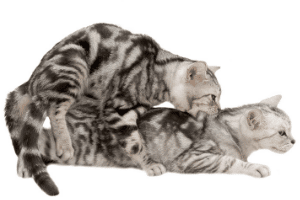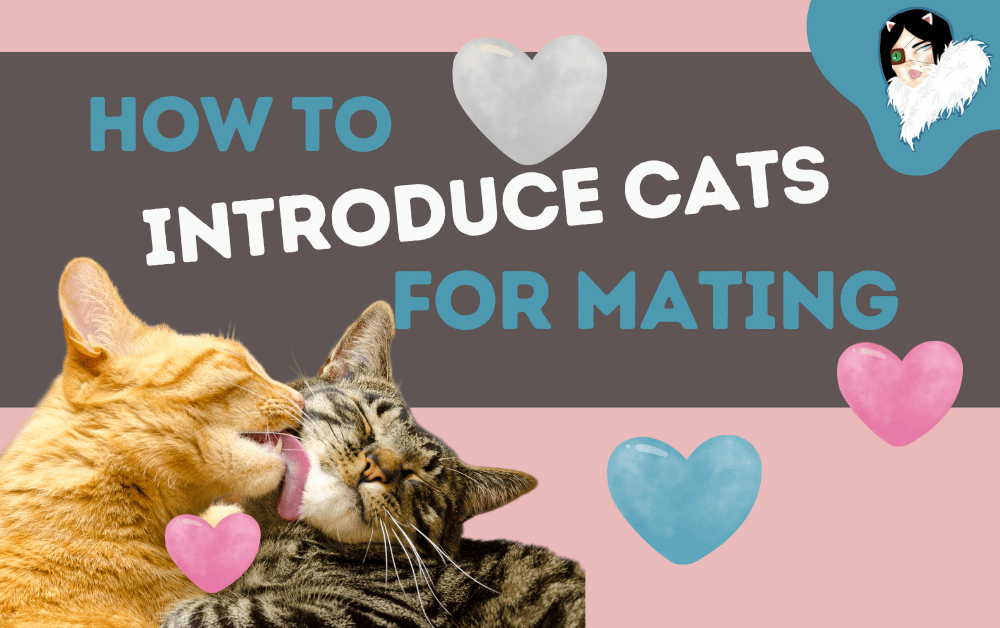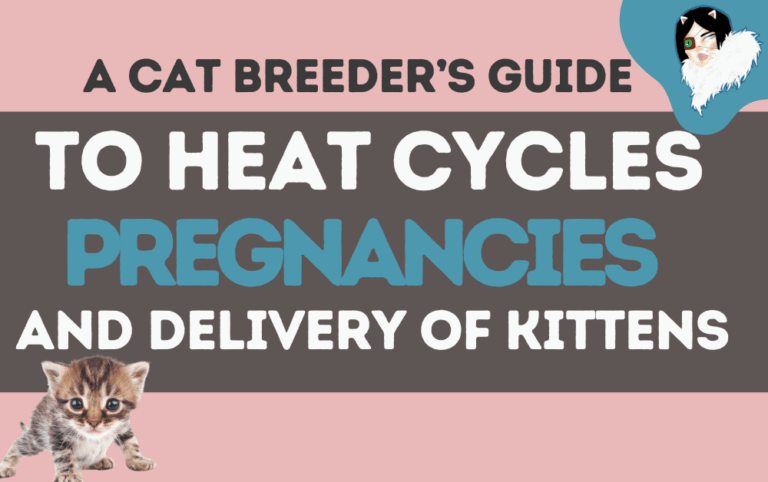Introducing Cats for Mating: Timing, Temperament & Real-Life Scenarios
Deciding when to mate your Queen is one of those rites of passage we all go through as breeders. It’s exciting, a little nerve-wracking, and definitely not something that comes with a one-size-fits-all answer. There’s no hard science that says, “Mate her exactly at X months.” Instead, it’s a decision rooted in observation, experience, and knowing your individual cats. And let’s be honest—there’s a lot of trial and error before you find what works best in your cattery.
Brush up on heats, pregnancies, and birthing
This podcast episode dives deeper into this topic with real-life examples. Have a listen!
Show Notes
Resource Mentioned in this Episode: Suppressing Estrus Cycles in your Queens with Melatonin. Here is the link to the Melatonin Implants for Cats. This website has a lot of useful information about using Melatonin.
When Should You Mate Your Queen for the First Time?
The first mating is kind of a milestone—for both you and your Queen. You get to see how she behaves as a mother, how she handles pregnancy, and ultimately, what kind of kittens she produces. It’s exciting, no doubt. But it’s also a serious responsibility.
A female cat can start cycling as early as 4 months old. Common sense would tell us that is too young to mate. So, when is the right time? Some breeders go by age—maybe they’ll breed their girls at 10 months, others wait until she’s 18 months or even 2 years old. But here’s the truth: age alone doesn’t tell the full story. The real indicator is whether she’s reached puberty, and in cats, that happens when she’s reached about 85% of her optimal adult body weight. That’s when her body is actually ready.
Rushing into things can create complications. A very young Queen might not ovulate fully, which can lead to small litters. Smaller litters might sound ideal at first—but those kittens tend to grow larger in utero, making delivery more difficult for a narrow-pelvis Queen. And that’s when you start hearing words like dystocia, stuck kittens, emergency C-sections. So it’s not just about timing; it’s about giving her the physical maturity to do her job safely and successfully.

After a Litter: When Can You Mate Her Again?
Your girl just had kittens and knocked it out of the park. Now what? Do you wait? Do you go again?
This one stirs up a lot of debate. Some breeders follow the natural heat cycle—if she goes back into heat soon after weaning, they let her breed again. Others like to give her several months off to recover and rebuild. Both approaches exist on the spectrum of ethical breeding—but the key is always this: know your Queen.
TICA, for example, won’t allow registration of a new litter less than 90 days after the last one. That tells you something. That’s roughly 4 weeks between delivery and breeding again, which is technically possible—but not always ideal. Physically, she might bounce back quickly, especially if she’s young and healthy. But emotionally and hormonally, she might need a break.
Sometimes Queens cycle back to back, and you’re stuck deciding what to do. If you’re not ready for a back-to-back litter, consider suppressing her heat cycle. Melatonin implants are an effective, reversible option, and they’ve been used successfully in breeding programs to space out litters. Check out this resource for details on how to use them safely.
And just in case she does go into heat and finds her way to your stud unexpectedly, make sure your cattery is set up with secure spaces for boys and girls. Unplanned litters are real, even in the most well-run catteries.
Behavioral Scenarios: What to Expect When You Introduce Mating Cats
Here’s where things get interesting. Cats aren’t machines. They’re moody, intuitive, and often unpredictable—especially when it comes to mating. The pairing you think is going to be perfect might not go as planned.
Let’s break down a few real-life scenarios you might run into.
The “Friend Zone” Pair
You’ve had your male and female living side by side, getting to know each other, building that cozy roommate bond. But now she’s in heat, and he’s completely ignoring her. No mounting. No interest. Nada.
What happened?
Well, cats are territorial by nature. When they spend too much non-reproductive time together, they often lose that spark. Their scents become “normal.” The male no longer sees her as a female in heat—just another cat in the house. And when the moment comes, he’s not turned on by her pheromones anymore.
You might find yourself with this challenge if all of your breeding cats live in the house and cohabitate.
The fix? Give them space and time. Separate living areas can help preserve that chemical curiosity they need when it’s go time. Try to separate them until the next heat cycle, and try again.
The Combative Queen
Then there’s the spicy Queen. Maybe she’s a tortie (we all know how those girls roll). You put her with the stud and boom—hissing, smacking, and absolute chaos.
This isn’t abnormal. Some females don’t like being approached when they’re still figuring things out. It might be her first time. She might not know the male. Or she might just not be comfortable in the mating room.
The trick here is to ease her into the environment. Let her sniff the area beforehand. Scent swap with blankets. And give her a little time before you throw her into the lion’s den. Once she’s in with the male, she may still show signs of discontent for several days. Don’t panic. She knows what she’s doing and what she’s willing to tolerate. Usually, the Queen will surrender after a few days spent with the Sire.
If the male is too timid, she might overpower him. You’ll need a stud with confidence—or wait until she’s in full estrus before reintroducing.
No Interest From Either Party
She’s doing the tail twerk. He’s… staring at a wall. What gives?
In some cases, you’ve got a lack of chemistry. It happens. Just like people, some cats have preferences. Maybe the male isn’t picking up on her scent. Maybe she’s in a weak heat. Maybe they just don’t vibe.
You can try swapping partners, changing locations, or waiting for a stronger heat cycle. Not every pair will mate on the first try. And not every pair is meant to. Throw some catnip and Marvin Gaye into the scene and see if it helps. 🙂
In this podcast episode, you’ll hear some ideas on how to introduce your cats when it’s time for mating.
Patience is the Key
Mating cats is rarely a smooth, quiet process. There will be growling. There will be hissing. There might even be a few smacks. But don’t confuse normal mating behavior with actual fighting. If your gut tells you something’s off—trust it. But if it’s just a little drama and noise, that’s par for the course.
Most of the time, with a little patience and a safe, controlled environment, nature will take over. Hormones are powerful. Give them space, supervise from a distance, and let it unfold.
Now that you have some insight on how to introduce cats for mating, you can have more confidence in knowing how to handle each situation. The next thing you know, you’ll be learning what to expect when your cat is expecting!
Best of luck to you!! Remember, The Best Way to Do things is YOUR WAY.

Get the Training and Support That You Need
When you become a member today, you’ll have instant access to a personal mentor who will be there for you and give you the answers you need.
Not only this, you’ll also get access to:
- Step-by-Step Training Courses about Breeding Cats
- Full Blueprints for Marketing Your Cattery and running your business professionally
- Personal Mentor that will help you with ALL OF YOUR QUESTIONS
- Help determining the right price for your kittens
- Daily Marketing Tips via Text Message
- Unlock TikTok For Your Cattery with the course on Viral Video Creation
- Digital Resources and Tools
- Invite Only to our Discord
- Exclusive Deals on SpaySecure and Sensei Store
- Monthly “Members Only” Training Calls





I have 2 Maine Coons in heat right now and my male does not seem interested in anything except sniffing. Suggestions?
Is he too young? has he friend zoned her?
Our male main coon is 18 months old I have 3 females that have been in heat alone he is not interested what can I do
Play some Luther Vandross.
I have a male Maine coon and similar issue – he won’t mate the queen. Acts like maybe then just grooms himself. Did you get an answer from anyone on what to do?
My female cat is 7years and my male cat is 9month . The female currently on it and she’s not allowing the male on her . They have been chasing each order round the house for 2days now. What can I do please?
Maybe the male is too young and not ready yet.
My male keeps trying but he is so far up my females back he can’t figure it out, this sounds normal compared to what I’ve read, am I supposed to interject or just leave them
Just leave him. He’ll figure it out.
I have a 10 month old male and a 2 year old female 1 month ago he was trying to mount her but she wasn’t ready now she is in full estrus and he just smells her down there but shows no interest otherwise what is happening I’m so confused
I have 2 year old male and 2 year old female and clearly they have friend-zoned each other, he shows no interest in mating, she can throw her backend in his face and he is not interested to even smell. Tried with 2 “outside” queens and same results, but apart that he was interested in smelling one as he was walking behind her and smelling until she started hissing and going after him, but once she started hissing he gave up and wouldn’t go even close her.
Can any cat mate? Not in breed and color.
Also how old do cats have ti be to mate each other?
It depends. You can take the Complete Guide to Breeding Pedigree Cats course to get all of the basic information you need!
One more thing, do fixed cats have a chance to mate? do they need Surgery to ne able to breed?